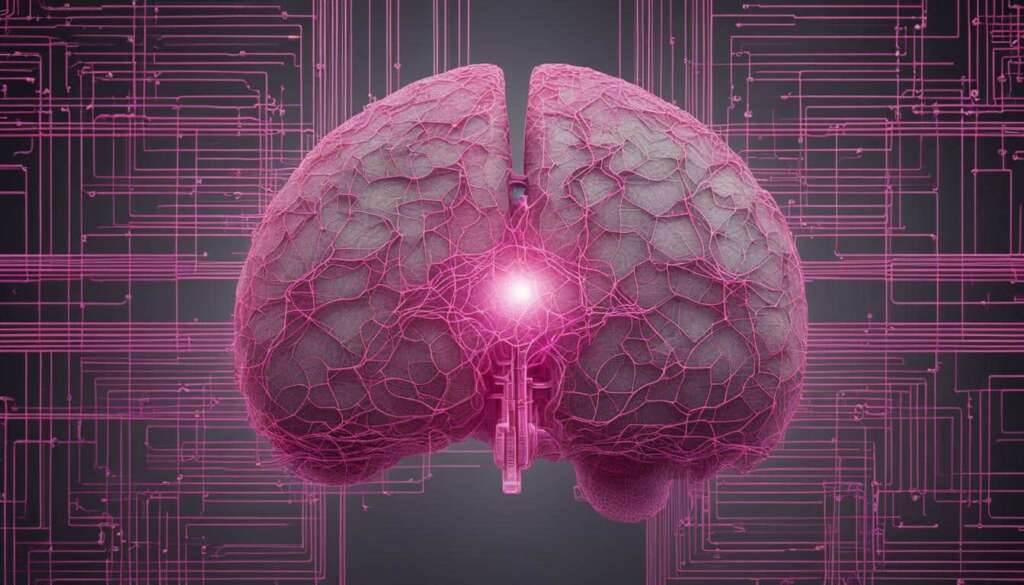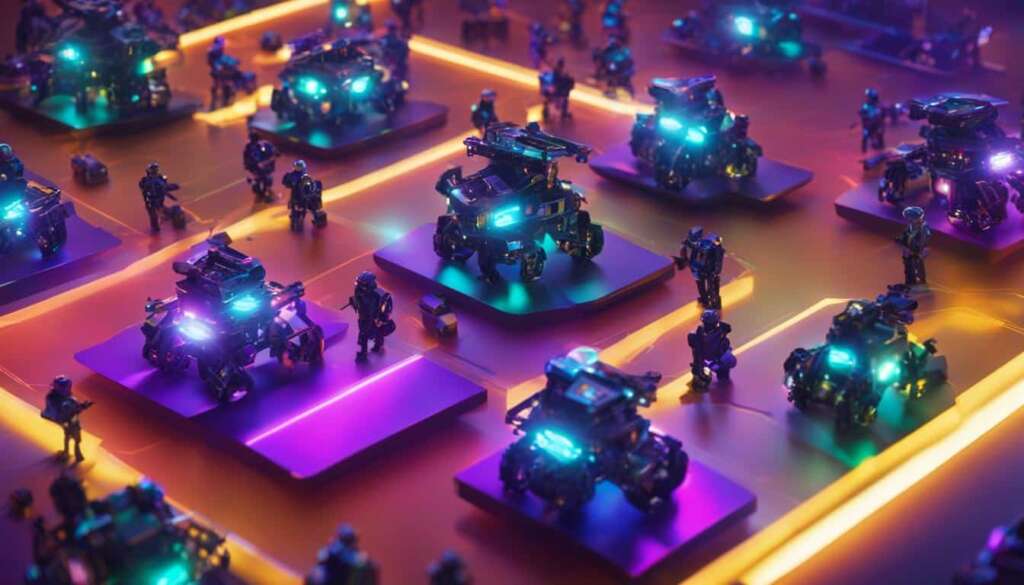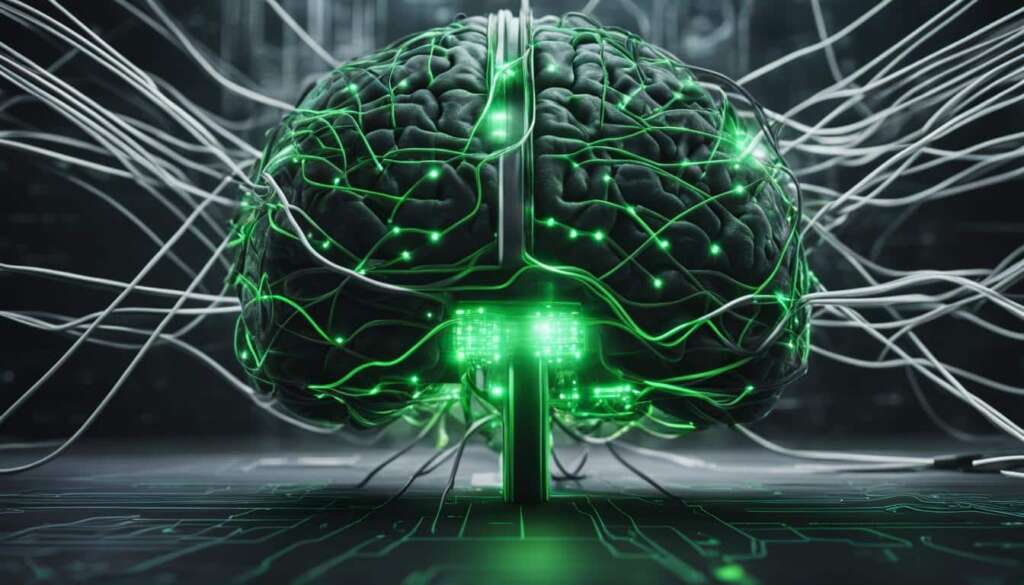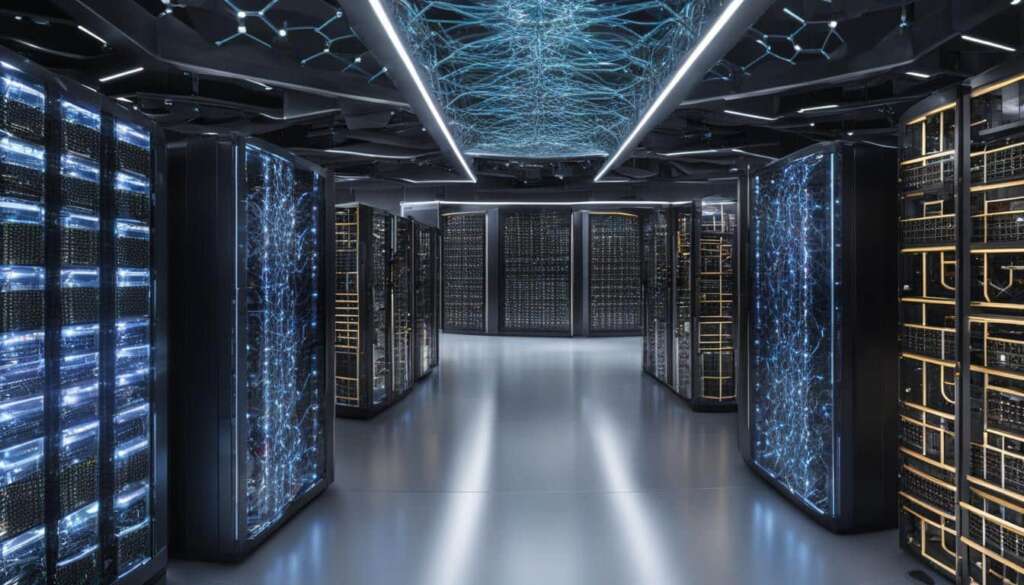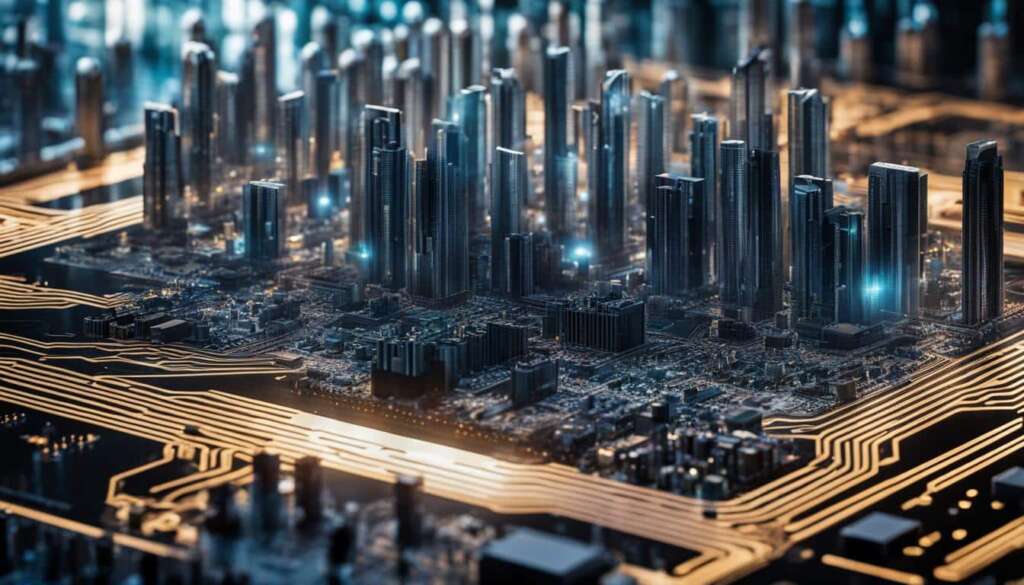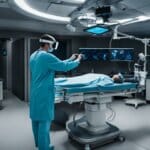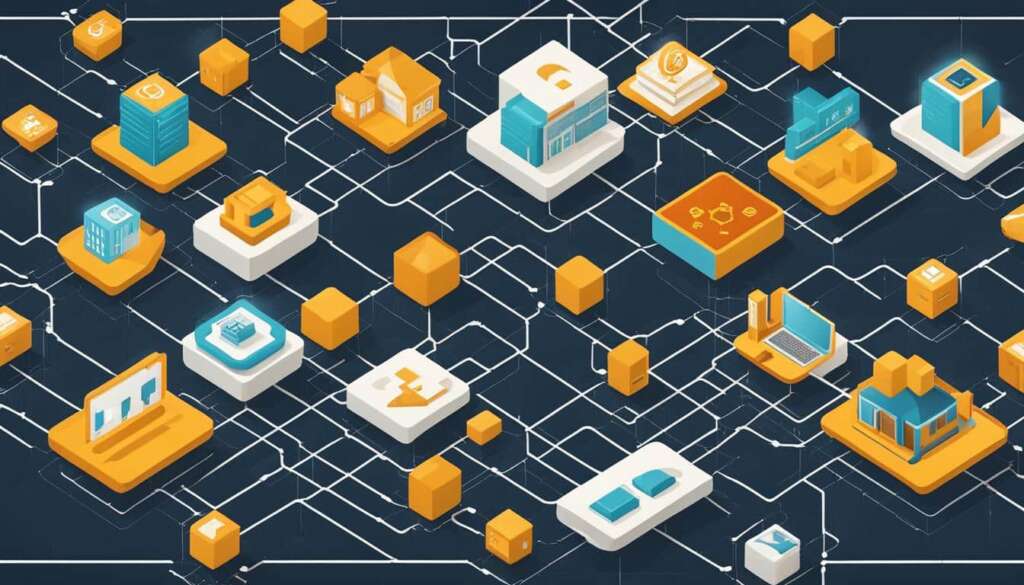Table of Contents
Scientists have achieved a major breakthrough in the field of computer technology by harnessing the power of brain tissue. This innovative approach combines neural networks and artificial intelligence to create a working computer system with unparalleled computational abilities. The integration of brain tissue into computer systems opens up a world of possibilities for cognitive computing and brain-inspired computing. This advancement has the potential to revolutionize various industries and fields, including healthcare, robotics, and artificial intelligence research.
The integration of brain tissue in computer systems opens up new possibilities for brain-computer interfaces. These interfaces allow direct communication between the human brain and the computer, enabling seamless interaction and control. This technology has the potential to revolutionize various fields, including healthcare, prosthetics, and virtual reality. Brain-computer interfaces can enable individuals with disabilities to regain mobility and communicate effectively. Additionally, the exceptional computational abilities of brain tissue computers can drive advancements in areas such as autonomous vehicles, robotics, and cognitive computing.
The Power of Brain Tissue in Computer Systems
Brain tissue brings significant advantages to computer systems. The integration of neural networks allows for advanced pattern recognition and decision-making capabilities, similar to the human brain. By combining this neural network with artificial intelligence algorithms, these computer systems can process and analyze complex data sets at an unprecedented speed and accuracy. This results in exceptional computational power, enabling a wide range of applications such as image and speech recognition, natural language processing, and deep learning.
Pattern Recognition and Decision-Making
Neural networks, inspired by the intricate workings of the human brain, enable computer systems to recognize patterns and make informed decisions. These networks consist of interconnected artificial neurons that mimic the complex structure of the brain’s neural connections. As a result, these systems can identify and interpret patterns in data sets, unlocking new possibilities for machine understanding and inference.
With the integration of artificial intelligence algorithms, brain tissue computers can further refine their decision-making capabilities. These algorithms can optimize neural network performance, enabling the computer to make more accurate and timely decisions based on the patterns it recognizes. This synergy between neural networks and artificial intelligence empowers computer systems to process and analyze complex data sets with ease.
Enhanced Computational Power
The integration of brain tissue in computer systems grants unparalleled computational power. Neural networks excel at parallel processing, enabling multiple computational tasks to be performed simultaneously. This inherent parallelism allows brain tissue computers to rapidly process vast amounts of data, providing insights and solutions in real-time.
The computational power of brain tissue computers can revolutionize industries such as healthcare, where large-scale data analysis and diagnostics can be performed swiftly and accurately. In the field of image and speech recognition, brain tissue computers can process visual and auditory inputs with exceptional precision, empowering applications ranging from autonomous vehicles to virtual assistants.
Furthermore, brain tissue’s computational power allows for the implementation of deep learning techniques. Deep learning is a subset of machine learning that focuses on training artificial neural networks to recognize intricate patterns and make complex decisions. With the phenomenal computational power of brain tissue computers, deep learning models can be trained and deployed faster and more efficiently.
| Application | Benefit |
|---|---|
| Image recognition | Accurate identification of objects, people, and scenes in images. |
| Speech recognition | Precise transcription and comprehension of spoken language. |
| Natural language processing | Efficient analysis and interpretation of human language. |
| Deep learning | Enhanced training and deployment of complex neural network models. |
As showcased by the table above, brain tissue computers offer remarkable benefits in various applications. Leveraging the neural network’s pattern recognition capabilities and the computational power of brain tissue, these computers fuel advancements in artificial intelligence and drive innovation across industries.
The Potential Applications of Brain Tissue Computers
The integration of brain tissue in computer systems opens up new possibilities for brain-computer interfaces. These interfaces allow direct communication between the human brain and the computer, enabling seamless interaction and control. This technology has the potential to revolutionize various fields, including healthcare, prosthetics, and virtual reality.
Brain-computer interfaces can enable individuals with disabilities to regain mobility and communicate effectively. By connecting the brain to external devices, these interfaces can interpret and transmit neural signals, allowing paralyzed patients to control prosthetic limbs or communicate through speech synthesis. This breakthrough brings hope and independence to people who have lost their physical abilities.
Moreover, brain-computer interfaces have the potential to enhance virtual reality experiences. By directly tapping into the user’s brain, these interfaces can provide a more immersive and interactive virtual environment. Imagine being able to control your virtual actions and experiences using only your thoughts.
The exceptional computational abilities of brain tissue computers also pave the way for advancements in other sectors. For instance, in healthcare, brain-computer interfaces can facilitate neurofeedback therapy, allowing patients to train and improve their brain function. In the field of robotics, these interfaces enable precise control and coordination of robotic systems, enhancing their capabilities in areas such as space exploration or disaster response.
Brain-Computer Interfaces in Healthcare
One promising application of brain-computer interfaces in healthcare is their potential use in neurorehabilitation. These interfaces can support patients with neurological disorders such as stroke or spinal cord injury by facilitating the reintegration of brain and body functions. Through intensive training and feedback, patients can relearn movements, regain independence, and improve their overall quality of life.
Additionally, brain-computer interfaces show promise in the field of mental health. By providing real-time feedback on brain activity, these interfaces can assist in the diagnosis and treatment of conditions like depression, anxiety, and attention deficit hyperactivity disorder (ADHD). They offer a novel approach to personalized and targeted therapies.
Brain-Computer Interfaces in Prosthetics
Brain-computer interfaces have the potential to revolutionize the field of prosthetics. By establishing a direct connection between the brain and artificial limbs, individuals with limb loss can regain dexterity, control, and sensory feedback. With advancements in neural engineering, prosthetic limbs can be seamlessly integrated into the body, providing a more natural and intuitive user experience.
Brain-Computer Interfaces in Virtual Reality
Virtual reality (VR) is an emerging technology that has the potential to transform various industries, including entertainment, education, and training. Brain-computer interfaces can enhance the VR experience by enabling direct control and interaction through the user’s thoughts. This opens up a whole new level of immersion and realism, revolutionizing the way we interact with virtual environments.
Imagine exploring a virtual world and controlling the actions of your avatar using only your mind. Brain-computer interfaces can detect and interpret the user’s intentions, translating them into virtual actions. This technology has the potential to redefine the possibilities of virtual reality, making it more accessible, intuitive, and engaging.
As brain-computer interfaces continue to advance, their applications will expand further, transforming industries and enhancing human capabilities. The integration of brain tissue in computer systems represents a significant milestone in the development of new computer technology, unlocking a plethora of possibilities for the future.
The Future of Brain-Inspired Computing
The breakthrough in harnessing the power of brain tissue in computer systems paves the way for further advancements in brain-inspired computing. This exciting field focuses on developing computer systems that mimic the complex structure and functionality of the human brain. With the increased computational power provided by brain tissue, researchers can explore new algorithms, architectures, and models that replicate the brain’s cognitive abilities.
This integration of brain tissue and computational power holds immense potential for driving significant advancements in artificial intelligence, machine learning, and cognitive computing. As these brain-inspired systems continue to advance, they have the potential to solve complex problems and drive innovation in various industries, revolutionizing the way we approach technology.
The future of brain-inspired computing is an exciting one. It has the capability to shape the technological landscape and advance our understanding of the human brain. As researchers continue to explore the potential applications of this new computer technology, we can expect to witness remarkable developments in fields such as healthcare, robotics, and artificial intelligence research. Brain-inspired computing has the power to unlock new possibilities, transforming the way we live, work, and interact with machines.
FAQ
How does the integration of brain tissue benefit computer systems?
The integration of brain tissue in computer systems allows for advanced pattern recognition and decision-making capabilities, similar to the human brain. This combination of neural networks and artificial intelligence algorithms enables these systems to process and analyze complex data sets at an unprecedented speed and accuracy, resulting in exceptional computational power.
What are the potential applications of brain tissue computers?
Brain tissue computers have the potential to revolutionize various industries and fields, including healthcare, robotics, and artificial intelligence research. They can be used for image and speech recognition, natural language processing, deep learning, and can even drive advancements in areas such as autonomous vehicles, prosthetics, and virtual reality.
How can brain-computer interfaces benefit from the integration of brain tissue?
The integration of brain tissue in computer systems opens up new possibilities for brain-computer interfaces. These interfaces enable direct communication between the human brain and the computer, facilitating seamless interaction and control. This technology has the potential to revolutionize fields such as healthcare, prosthetics, and virtual reality, allowing individuals with disabilities to regain mobility and communicate effectively.
What does the future hold for brain-inspired computing?
The breakthrough in harnessing the power of brain tissue in computer systems paves the way for further advancements in brain-inspired computing. This field focuses on developing computer systems that mimic the complexity and functionality of the human brain. With the increased computational power provided by brain tissue, researchers can explore new algorithms, architectures, and models that replicate the brain’s cognitive abilities, potentially solving complex problems and driving innovation in various industries.

